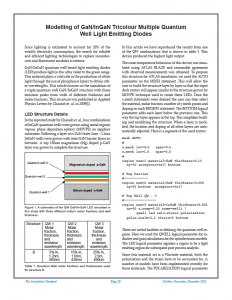Using VICTORY Process to Simulate Thermal Oxidation of Silicon at High Pressures of Ambient Gases
Introduction
Developing ULSI silicon technology requires good control of dopant diffusion and minimizing defect formation during thermal oxidation. The use of high pressures of ambient gases can have a significant impact on ability to meet such requirements [1]. In particular, high pressure steam (~10atm) allows the growth of oxide films of the order of 1 μm in less then 2.5 hours at temperature as low as 800 C. At such low temperatures dopant redistribution is substantially reduced.
This paper demonstrates the ability of VICTORY Process to accurately model the thermal oxidation of silicon at high pressures. The 3D process simulation software VICTORY Process uses the same physical model as one implemented in ATHENA (2D process simulator). The model is briefly outlined bellow. Numerical results are compared with the experimental ones [1] and the good agreement is demonstrated. If plane silicon is thermally oxidized, both Silvaco’s process simulators (VICTORY Process and ATHENA) give very close results. The paper shows that these results are also close to the results obtained by integration of the 1D kinetical equation obtained by DealGrove and Massoud [2,3]. These comparisons prove that the model is properly implemented in VICTORY Process and can be used to oxidize 3D structures at high pressures.



